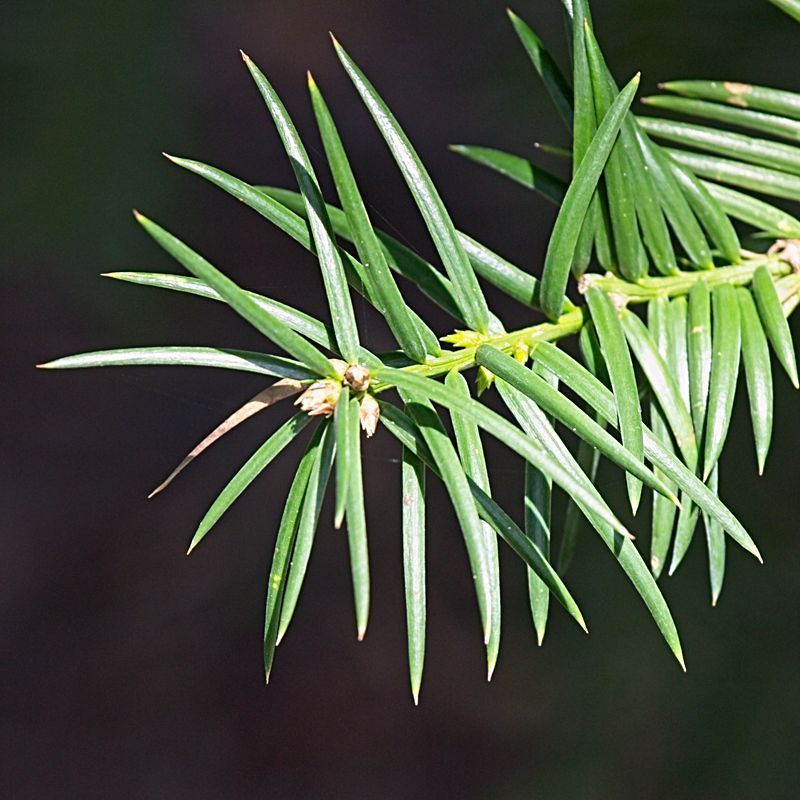FNPS Plant Database
Torreya taxifolia
Nomenclature
Common Name:
Synonym(s):
Genus species:
Family:
Taxaceae
Plant Specifics
Form:
Size:
Life Span:
Long-lived perennial
Flower Color:
Fruit Color:
Phenology:
Noted For:
Landscaping
Recommended Uses:
Considerations:
Availability:
Propagation:
Light:
Moisture Tolerance:
Always Flooded---------------------------------Extremely Dry
□□□□□□□□□□□□□□□□□□■■■■■■■■■□□□□□□□□□□□□□□□
Somewhat moist, no flooding -to- Not wet but not extremely dry
Salt Water Flooding Tolerance:
Unknown
Salt Spray/Salty Soil Tolerance:
Low/no tolerance of salty wind or direct salt spray
Soil or Other Substrate:
Sand, Loam
Soil pH:
Suitable to Grow In:
8A,8B

USDA zones are based on the average annual extreme minimum winter temperature.
Don't know your zone? Click here to search by zip code.
Ecology
Wildlife:
Birds eat seeds.
Native Habitats:
Natural Range in Florida:
Visit the USF Libraries Atlas of Florida Plants
Comments:
Ethnobotany:
General Comments:
In the wild, Torreya is dying out due to disease. If choosing to plant this species, obtain disease-free (out-of-state) specimens and plant well-removed from the Apalachicola River so that the planted specimens will not become infected. This is a federally endangered species, it cannot be transplanted or transported without landowner permission and/or appropriate permits.
There are also issues with planting this since the disease is easily transmittable (Chapman 2019). Bottom line, this is not something to do without consulting conservation specialists.
To participate in FNPS restoration and protection efforts for this species, see http://torreyakeepers.fnps.org.
Citations:
Chapin, Linda. 2000. Field guide to the rare plants of Florida. Florida Natural Areas Inventory, Tallahassee, FL.
Chapman, Dan. 2019. Saving the Florida torreya. One goal, two schools of thought on preserving the rare, endangered tree. ystematic Botany, University of South Florida, Tampa. https://www.fws.gov/southeast/articles/saving-the-florida-torreya/
Osorio, Rufino. 2001. A gardener's guide to Florida's native plants. University Press of Florida, Gainesville, FL.
Watkins, John and Thomas Sheehan. 1975. Florida Landscapt Plants, Native and Exotic. University Presses of Florida, Gainesville. (soil)









